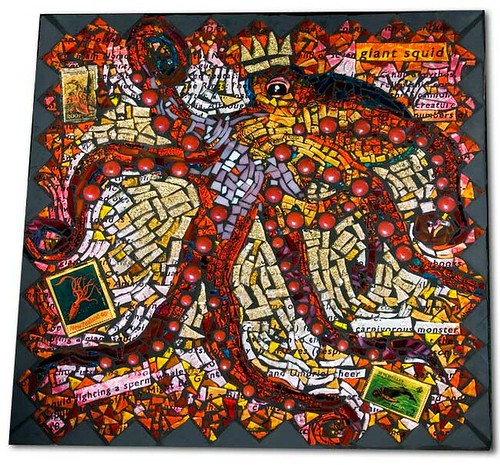Tales of giant squid have been common among mariners since ancient times, and may have led to the Norwegian legend of the kraken, a tentacled sea monster as large as an island capable of engulfing and sinking any ship. Japetus Steenstrup, the describer of Architeuthis, suggested a giant squid was the species described as a sea monk to the Danish king Christian III c.1550. The Lusca of the Caribbean and Scylla in Greek mythology may also derive from giant squid sightings. Eyewitness accounts of other sea monsters like the sea serpent are also thought to be mistaken interpretations of giant squid.
In early 2006, another giant squid, later named "Archie", was caught off the coast of the Falkland Islands by a trawler. It was 8.62 metres (28 ft) long and was sent to the Natural History Museum in London to be studied and preserved. It was put on display on March 1, 2006 at the Darwin Centre. The find of such a large, complete specimen is very rare, as most specimens are in a poor condition, having washed up dead on beaches or been retrieved from the stomach of dead sperm whales.
Researchers undertook a painstaking process to preserve the body. It was transported to England on ice aboard the trawler; then it was defrosted, which took about four days. The major difficulty was that thawing the thick mantle took much longer than the tentacles. To prevent the tentacles from rotting, scientists covered them in ice packs, and bathed the mantle in water. Then they injected the squid with a formol-saline solution to prevent rotting. The creature is now on show in a 9 metres (30 ft) long glass tank at the Darwin Centre of the Natural History Museum.
http://en.wikipedia.org/wiki/Giant_squid













No hay comentarios:
Publicar un comentario